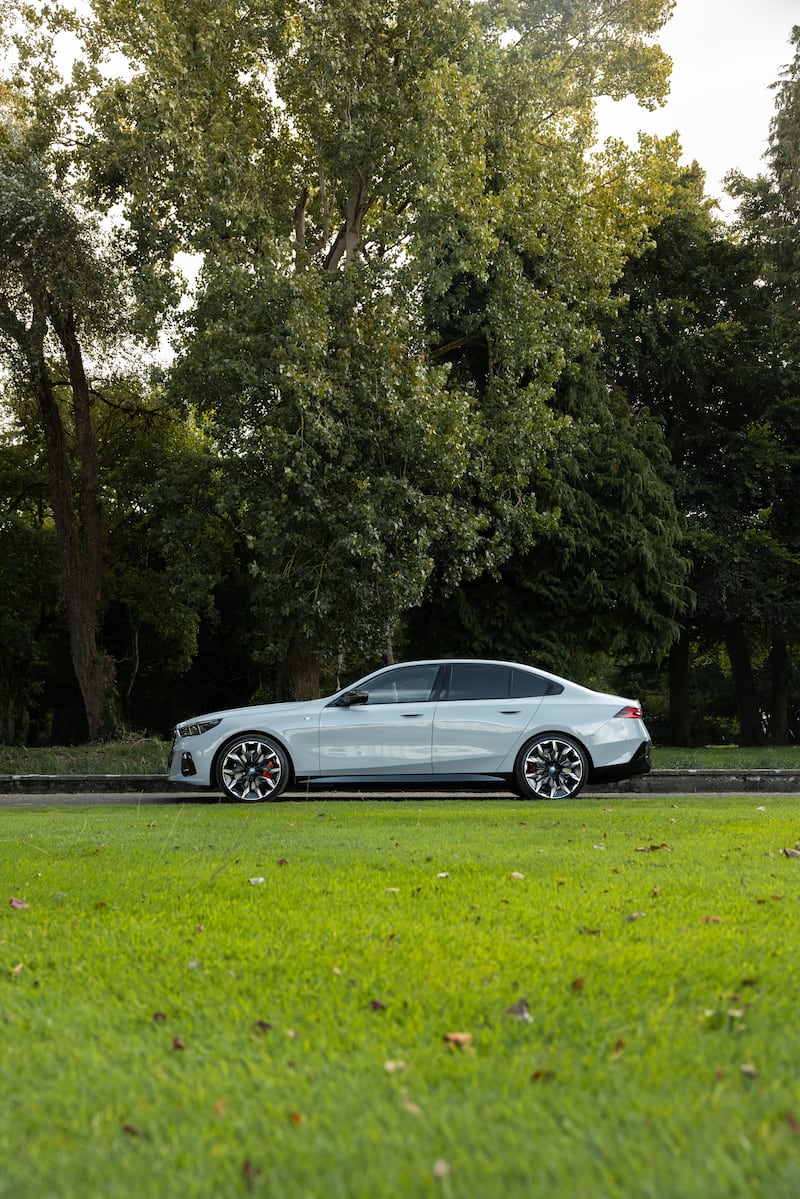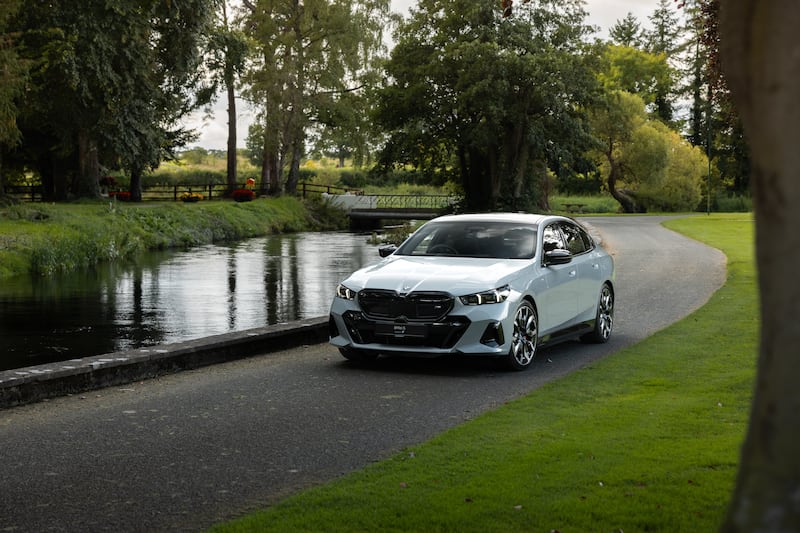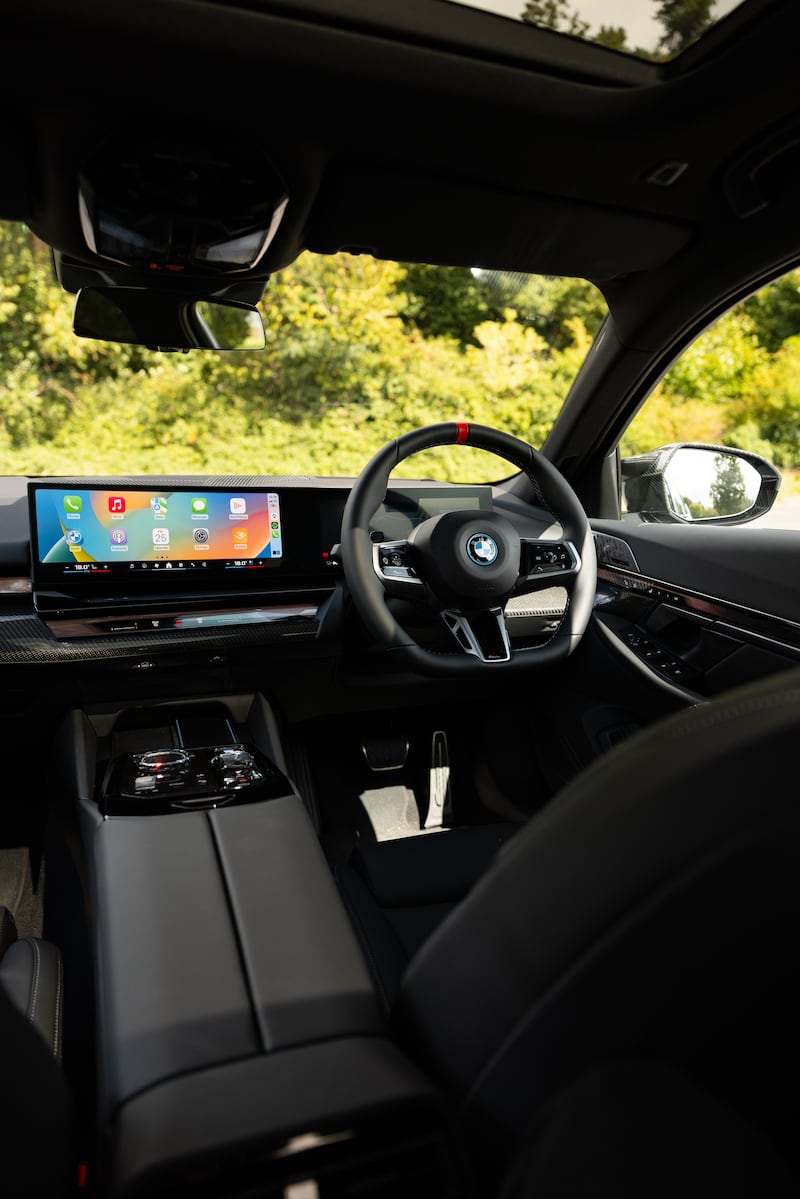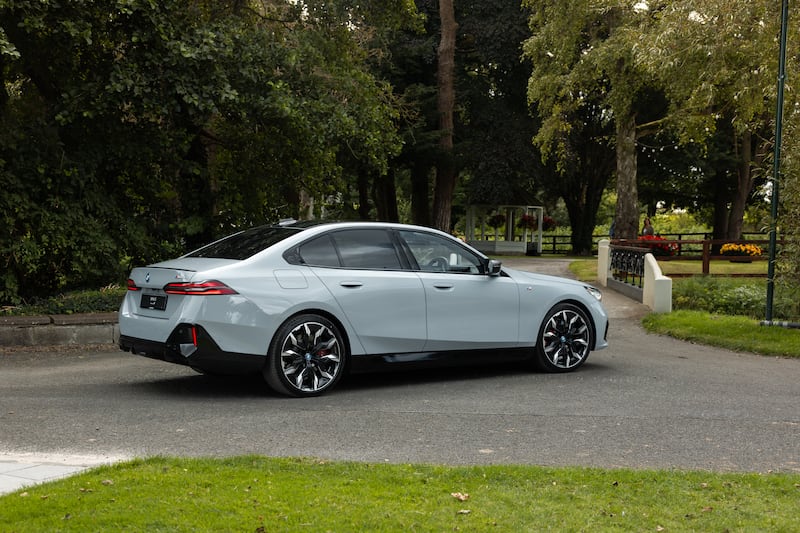The pressure of a single finger can have a profound effect. It can caress the skin of a loved one. It can press play on hours of a favourite show binge-a-thon. It can – click – trigger thermonuclear Armageddon.
Or it can hit the “Boost” switch in a BMW i5 M60, which is a little like a combination of all three. Actually, it’s not a switch, it’s a paddle. It sits behind the left hand side of the steering wheel, as if it were the downchange paddle of automatic gearbox. There is no corresponding “Unboost” paddle on the other side, incidentally.
All it takes is the gentle pressure of that single finger, a digitary press that moves the paddle backwards, towards the rim of the steering wheel by, oooohhhh, about 1.5mm. And doing it changes the i5 M60′s driving experience by quite lot.
Up to that point, the i5 has felt more or less like the regular, rear-wheel drive i5 40e albeit with somewhat more muscular performance.
READ MORE
That aside, there are only a few visual cues to tell you what you’re driving. The grille, with its surround lighting (tacky? Cool? Answers on a postcard please . . . ) is flat and has no pretend vertical vanes, and so gives the M60 a rather more snub-nosed look. There are also M-Sport-style aerodynamic wing mirrors, with a carbon fibre finish and a similarly carbon bootlid spoiler which is about – appropriately – about the width of a finger.

In spite of that visual subtlety, the M60 is very different to the standard i5. The regular, rear-wheel drive version has an impressive, but not excessive, 340hp. Now, you’d hardly ever be driving around in a standard i5 and find yourself thinking, “Hmmm. I like this car and all, but what it really, really needs is an extra electric motor, double the torque and an extra 261hp.”
Yet that is exactly what the i5 M60 has. It’s an all-electric, four-wheel drive, high-performance hooligan wearing the smartly cut business suit of a sleek, discreetly sexy 5 Series. Or, in other words, it follows exactly in the wheeltracks of 40 years of the M5, the 5 that’s more fun.
As standard, the i5 M60′s twin electric motors provide 517hp and 795Nm of torque. Which would be impressive enough, but do your thing with that left index finger and – wham! – you’ve got 601hp and 820Nm of torque to play with. Clicking back the Boost lever opens the taps on the motors and the battery, as well as engaging Sport driving mode which stiffens up the adaptive suspension, while also tweaking the throttle response and the steering weight.
Just to hammer everything home, it also backlights the digital instruments in red and fires up the “Iconic Sounds” noise generator. Developed with the help of famed Hollywood composer Hans Zimmer (Batman Begins, Interstellar) which sounds as if someone is feeding a synthesised church organ through an industrial shredder. It’s . . . odd but not unpleasant, but equally not half as good as some other artificially generated engine noises.
It matters little, because with the 10-second countdown for Boost mode ticking backwards in the middle of the instrument display, you won’t have much spare brain capacity to consider Zimmer’s tunes. You’ll be too busy holding on to the tail of the electric performance tiger you’ve just unleashed. This car – all 2,380kg of it – will fly from standing still to doing 100km/h in just 3.8 seconds. The top speed? A surprisingly high – for an EV – 230km/h. It is a blisteringly fast car.

However, that brings us to a problem. Yes, the i5 M60 is appropriately fast, and that lunch-losing pace, especially from a standing start, is never not impressive. However, the M60 costs a minimum of €120,205, and our test car clocked in at €135,089. Which in fairness is cheaper than the now-sadly-departed M5, but it’s still a heck of a lot of money. It’s more than twice the price of the BYD Seal Excellence, which can crank out the same 3.8 seconds, 0-100km/h time, and which isn’t all that much smaller inside to be honest. You could also by the compact Volvo EX30 Performance, which can actually beat the i5 M60 to 100km/h, taking just 3.6secs to do the same sprint.
[ Volvo’s electric EX30 is small. And perfectly formed?Opens in new window ]
So, does BMW have a problem here? In one sense, yes, it does because the rise of the electric car is democratising ridiculous performance levels. The kind of speed and power for which once you needed an expertly tuned-and-tweaked Munich straight-six can now be achieved by an off-the-shelf electric motor or two.
Which leads to another problem: can the i5 M60 justify its lofty price tag? The answer is . . . just about, yes. For a start, this is a great-looking car. Thanks in no small part to its grille being wider than it is tall, it’s one of BMW’s best-styling jobs in ages. Secondly, it’s superbly well made inside.
The quality of the cabin is truly something special, and that’s something that its more affordable rivals simply cannot touch, at least for now. Crucially, it also boasts much higher cabin quality than its most direct rival, the Mercedes-Benz EQE. It also manages to feel roomier and brighter in the back seats than the Merc, although the boot, at 490 litres, is a touch on the small side for a car of this size (a more useful, and more handsome, Touring estate version is on the way, though).

It also has a really neat trick when the road becomes challenging. The i5 M60 loses about 500kg. Of course, it actually doesn’t, but the Sport driving mode and the sharp steering make it seem as if it has.
There is no way in physics that a car weighing this much should carve and dance its way through a series of tight, slippery, wet corners like this one does. Following far too many weeks and months driving pointlessly tall and unresponsive SUVs and crossovers, this i5 M60′s low-slung agility feels like a bottle of chilled, lightly sparkling water after a trek across the Gobi.
It’s not perfect – in fact, you could easily make the argue that for a car with an M-badge, for all of the technical impressiveness of its handling, it leaves you feeling a touch too detached from the experience. You’re enjoying how well the i5 tackles that mountain road, but you’re just not sure it actually needs your help in the matter.
As a counterpoint to that, the M60 has one of the best split driving personalities I’ve ever come across, deftly mixing everyday comfort and refinement (the damping quality of the suspension is truly astonishing) with the Boost button madness.

It’s even reasonably efficient. The 81.2kWh battery pack has a claimed range of up to 516km, but that’s probably not seriously do-able. However, we were seeing a pretty solid 420km in cold, wet, winter weather, so 450-460km should be doable in warmer conditions and even with an, er, enthusiastic sprint up that mountain road included, the i5 easily averaged 22kWh/100km economy on our test, which isn’t too shabby and is helped by the surprisingly sleek 0.23Cd coefficient of drag. It recharges quickly too, at up to 205kW from a high-speed DC charger.
Cheaper rivals will, doubtless, dig deeply into BMW’s once unassailable M-Car performance advantage, but the style, quality and driving experience of this i5 M60 keep it just ahead, if perhaps by only a finger’s width.
Lowdown: BMW i5 M60
Power: 442kW twin-e-motors developing 601hp and 820Nm of torque, powering all four wheels via a single-speed automatic transmission.
CO2 emissions (annual motor tax) 0g/km (€120).
Electric consumption: 18.2-20.6 kWh/100km (WLTP).
Electric range: 455-516km (WLTP)
0-100km/h: 3.8sec.
Price: €135,089 as tested, i5 starts from €91,105.
Verdict: It’s not quite an electric M5, and it’s very expensive, but it’s also finger-licking good.













